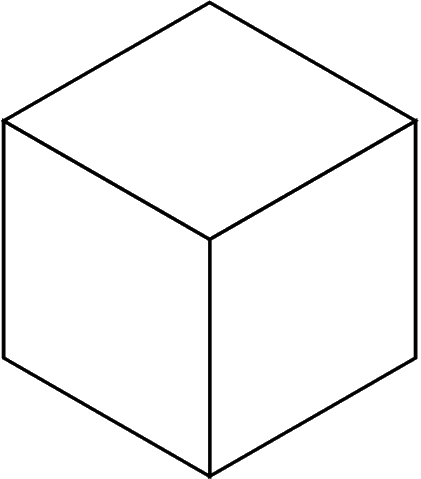3D Drawing and Geometry
Experiment with 3D geometry
“I wouldn’t paint the way I do if I hadn’t gone to architecture school. That’s where I learned to think abstractly and to draw like an architect.”
—Carmen Herrera
Conversation with Dana Miller, October 10, 2014.
To develop her hard-edged style of abstraction, Carmen Herrera has undertaken a disciplined, but highly sophisticated exploration of color and form. Herrera studied architecture for only one academic year, but this experience had a profound effect on her. The basic tenets of drafting that she learned in her introductory classes at the Universidad de La Habana enabled her to imagine a three-dimensional form and translate it into two dimensions, onto paper or canvas.
Inspired by the advice of her fellow artist and friend Barnett Newman “not to make something, and then think about it, but to think about something, and then make it,” Carmen Herrera often spends weeks on preliminary drawings, trying out different shapes and compositions and making precise mathematical calculations before embarking on a painting. The preparatory drawings that she makes for each painting reveal how Herrera often thinks in three-dimensional terms, and then transforms that image into two-dimensions.
a. Print out the template of a diamond shape in the teacher guide. Give each student three diamond shapes. Ask students to cut out the diamonds and experiment with them to make a three-dimensional cube. Have them choose three different colors for each diamond shape. When students have finished coloring their diamonds, have them tape or glue their cubes together and display them on a wall so that they form one large image. What effect does their large image have on the classroom space?
b. This project is recommended for older students. Isometric shapes visually represent three-dimensional objects in two dimensions in architectural, technical, and engineering drawings. For example, in a cube, the three coordinate axes appear equally foreshortened and the angle between any two of them is 120 degrees. The drawing may look distorted because the scale of features that appear further away is the same as features that appear closer. An isometric grid consists of vertical lines and diagonal lines at 120-degree angles that can be used as a template to draw 3D objects. Print the isometric grid in the teacher guide and ask your students to use it to draw a simple, geometric object such as their mobile phone, other electronic device, or an open book. For more information on isometric drawing, use the links below.

